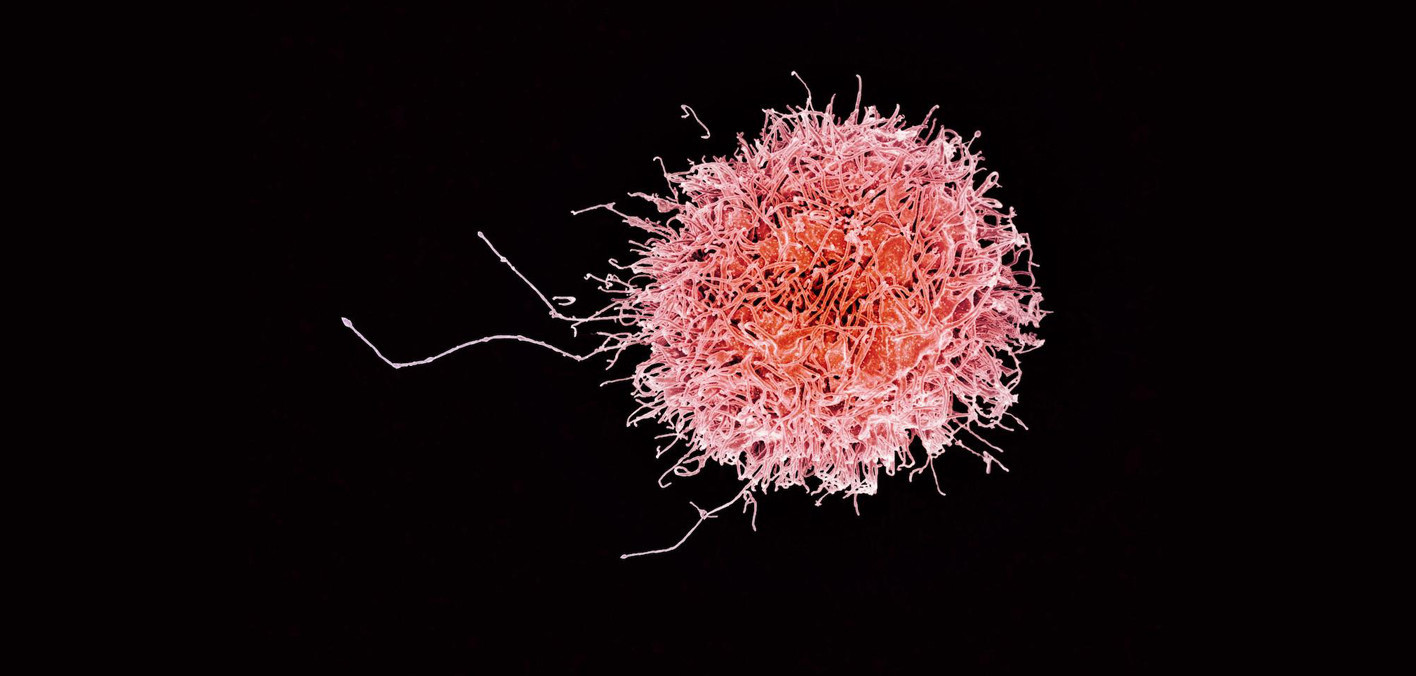A woman with acute myeloid leukemia (AML) was “at the end of the line” after multiple courses of failed chemotherapy, recalls Rizwan Romee, MD, director of the Haploidentical Donor Transplant Program at Dana-Farber, who at the time was in training at the University of Minnesota. As a last-ditch effort, his mentor proposed an experimental infusion of natural killer (NK) cells donated by her son.
“Four days later the infiltrating skin lesions were gone, and soon she went into remission,” says Romee, who came to Dana-Farber 10 years later. “I thought this was the coolest thing I had ever seen. And it sparked my interest in NK cell-based immunotherapy.”
A type of white blood cell like T cells and B cells, NK cells are part of the body’s immune system defenses. Romee has pursued his enthusiasm for NK cells since his initial experience with them, as have a growing number of researchers testing their potential role in cancer immunotherapy.
Currently, T cells are the mainstay of cancer immunotherapy: most of the newer immunotherapy drugs unleash T cells against tumors by taking off the “brakes” that cancer cells use to suppress the T cell response. NK cell therapies are still only in early clinical trials, though clinical research is increasing, and biotech companies are investing in the field.
Before joining Dana-Farber last March, Romee led clinical trials at Washington University in St. Louis in which about a dozen patients with AML and myelodysplastic syndrome (MDS) received NK cells. Half of the patients went into remission.
What’s Next
Now, Romee is planning clinical trials at Dana-Farber, with one study expected to open later this year. This trial will test NK cell therapy in blood cancer patients who relapse following a stem cell transplant.
“We think the post-transplant setting is the perfect milieu for testing NK cells,” he says.
A next step, which Romee is currently planning, would be to give NK cells soon after transplant to patients who are considered at high risk of relapse because of gene mutations or other factors associated with their blood cancer.
How NK Cells Work
NK cells are “first responders” that rapidly detect and attack virus-infected cells and tumor cells. They go on the attack before T cells are deployed and poke holes in the membranes of target cells, then inject enzymes that trigger the cells to self-destruct. They also can eliminate cancer stem cells circulating in the body, helping to prevent metastasis.
They were named “natural killer” cells because, unlike T cells, they detect and destroy infected and malignant cells directly, without having to be activated or “trained” to respond to them. T cells need to have bits of their target cells “presented” to them by other immune cells to recognize them as foreign, and for the T cells to swarm into an attack mode. However, it’s now understood that NK cells perform better when they are activated by exposure to immune system substances called cytokines.
Although they can go on the defense quickly and attack tumor cells directly, NK cells are a small part of the immune system, making up only 10 percent of white blood cells. Cancer patients’ own NK cells are reduced in number and don’t function very effectively when removed and given back to the patient as a form of cell therapy. That’s why researchers are now focusing on allogeneic “adoptive” NK cell therapy—collecting NK cells from closely related donors and infusing them into the patient. This has been shown to be safe and, unlike T cell therapies, doesn’t cause a graft-versus-host disease attack on the recipient’s tissues.
Although donated NK cells appear to be safe, their effectiveness against different types of cancer is still unclear; one hurdle has been their limited persistence once infused into the recipient.
“My focus now is getting them to last longer,” says Romee.
He has had some success in doing so. Two years ago, he published a report on research showing that NK cells—which normally don’t have an immunological “memory” enabling them to persist and repeatedly respond to target cells—could be coaxed to become “memory-like” NK cells by exposing them in the laboratory to three kinds of cytokines called interleukins. In a small number of patients with AML, according to the report, the memory-like NK cells persisted for weeks and caused clinical responses in five of nine patients who were evaluated.
These patients did not receive stem cell transplants, but Romee says in the clinical trials planned at Dana-Farber, patients will be infused with donor NK cells following transplantation.
This article was originally published on September 14, 2018, by Dana-Farber Cancer Institute. It is republished with permission.







Comments
Comments